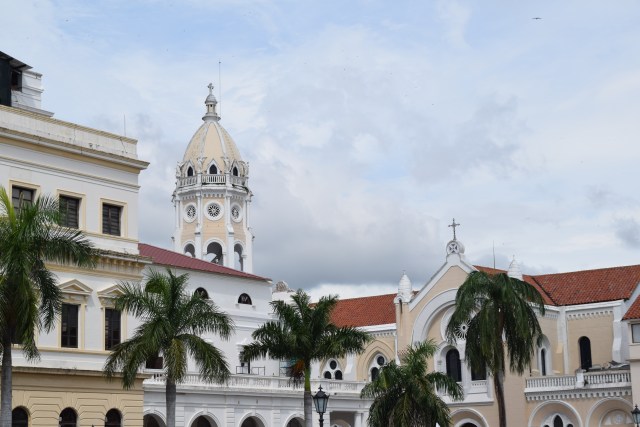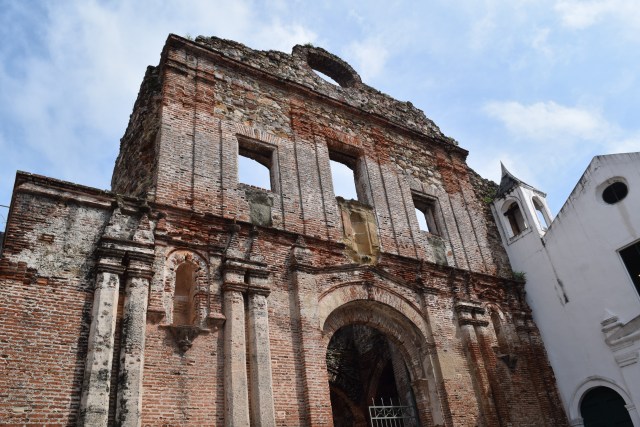Visiting an indigenous village is always fascinating and if you go to Panama City there are tours that will take you to an Emberá village. The Emberá people are tribes that live in the Panama rainforest and still keep their traditional lifestyle. They make a living by hosting tour groups and selling their native crafts which include wood carvings, basket weaving, and jewelry. You can find these crafts being sold in Panama City, but purchasing them in the village will ensure that the money spent goes directly to the families that created them. They are very proud of their traditions and are happy to share them with the people who visit their villages.





There are several different villages along the river in the rainforest, each comprised of different families. In order to reach one of the villages, we travelled in a motorized dugout canoe, which was hand carved by the villagers. On our way, we stopped to see a beautiful waterfall. We were fortunate that there were no others on the tour besides ourselves, which made it even more enjoyable. In order to reach the waterfall, we walked up through the stream, so bringing a change of shoes is advised. If you want to go swimming, you can also bring swimming suits, although we chose not to during our tour.





Our guide took us to one of the more remote villages, which was nice because not as many tours take the time to go there and we ended up being the only people to visit that village that day. As we beached our canoe, family members came to the village entrance and greeted us with traditional music. We then had time to wander through the village and learn more about their daily life. Their homes are simple huts with open walls and everyone sleeps on the floor. In the past, the Emberá tribe members wore nothing but small swaths of cloth around their waist, but now the women also cover up their chests as well since tourists were tending to stare at them too much.





Lunch was being prepared for the entire village as well as for ourselves and while it cooked over an open fire we watched the children playing in the open area in the heart of the village. The only modern building in the village is the school, which is built by the government, and teachers arrive on weekdays to provide lessons for children up to the age of 12 to 14. Although older children will leave the village to go on to higher education, most of them return upon completion to rejoin their village or to marry into another village. It is a very simple life, but the people that live in the village seem very happy.





After eating our lunch of tilapia and plantains served in a banana leaf, the villagers gathered together to play traditional music and dances. We also had the opportunity to get a tribal tatoo, which is more like a hemp tatoo that only lasts a couple of weeks. Afterwards, we took our time to look at the crafts that were set up in a large hut with each table belonging to a separate family. For any craft that you purchase, the money goes directly to the family that created it. We were told before going to the village not to give candy or money directly to villagers other than to purchase items. If you want to give them money, it should be given to the chief, who will then be sure that it gets distributed properly.





As we went down to our canoe to head back to our van, many of the villagers came down to the river to wish us goodbye and to cool off by swimming in the river. Once again, we were invited to join them, but chose not to go swimming. It was truly an interesting day and the Emberá tribe members were extremely friendly and welcoming. Visiting an Emberá village is certainly worth taking the time to do when spending time in Panama. It is also an excellent way to spend a little time deeper in the rainforest, enjoy the beautiful scenery, and see some of the wildlife in the area.















































